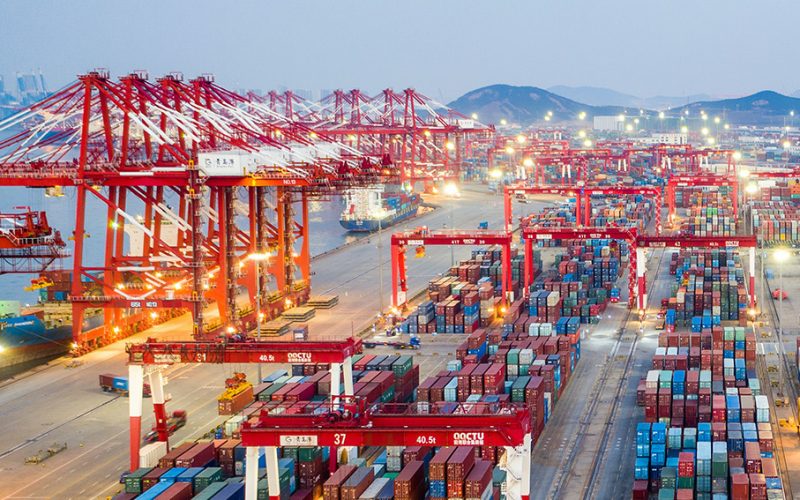by Regina Chi, CFA®, Vice-President and Portfolio Manager, AGF Investments Inc.
Business trends – or, more precisely, expectations about business trends – have a way of getting ahead of themselves. The current enthusiasm over nearshoring might well be a case in point.
It’s easy to see where it comes from, though. The COVID-19 pandemic threw global supply chains into disarray. Shipping costs soared and geopolitical events, including increasingly frosty relations between China and the United States, heightened the business community’s already intense focus on figuring out ways to make supply chains more resilient. Meanwhile, rising production costs in China have made other destinations increasingly competitive.
Put all those factors together, and it is no surprise that nearshoring, the practice of moving business operations to a country that is nearer to home base (or at least not China), has become a big talking point for management gurus and global investors. According to internet mention tracker Glimpse, interest in nearshoring has increased by 99% over the past year.
It’s true that nearshoring will likely increase over the longer term, and there are sound business reasons for global companies to embrace it, even if only as part of a China-plus-one supply chain strategy. But don’t skip over that important subordinate clause “over the longer term.”
As it stands, there are significant barriers standing in the way of a full-on push to nearshoring in Vietnam, Mexico and India – three of the most common nominees for relocation of operations out of China. (Let’s set aside for now the potential for “reshoring,” in particular to the U.S., because the barrier is obvious: much higher costs.) These structural issues fall into the general categories of scalability, worker productivity and capacity, infrastructure, and rule of law.
For example, Vietnam looks well-placed to benefit from China-plus-one strategies, given its advantages over other Asian countries. It shares a border with China and is in the middle of the ASEAN states, making for convenient shipping. The work force is young and labour costs are low compared to, say, Malaysia or China: Vietnamese manufacturing labour costs were US$2.99 an hour, on average, in 2020, compared to US$6.50 in China, according to Statista. Vietnam’s economy is more highly developed than Myanmar’s; it is more politically stable than the Philippines or Thailand and more accessible than Indonesia; it is generally less chaotic than India.
All good. But there are a few provisos, and they are big ones. Even after roughly doubling its exports since 2016, Vietnam is a miniscule manufacturing hub compared to China; its share of global export is only about a 10th of its larger neighbour’s.
That is hardly shocking, given that Vietnam’s population is 15 times smaller than China’s. Labour productivity – currently higher than only Myanmar, Laos, Cambodia and East Timor among Southeast Asian countries – is a chronic challenge, and Vietnam lacks highly skilled workers relative to China. In short, given its scalability and work force issues, it simply cannot replace China as a manufacturing hub.
Nor can Mexico, at least not yet. Again, it has some advantages that seem to make it a ripe candidate for nearshoring. Mexico boasts physical proximity to the world’s largest economy, and it’s already competitive as a manufacturing and transportation hub for U.S.-bound products, especially when compared with other nearshoring options in Central America.
Yet there are two major hurdles. Electricity supply is the highest, with outages a regular occurrence amid congested transmission lines (occurring for more than 4,000 hours annually) and power losses. Meanwhile, Mexico’s security situation has deteriorated under President Andres Manuel Lopez Obrador, who has yet to develop a credible plan for addressing crumbling rule of law and rampant corruption. Unless there is real progress on those issues, the cost – both physical and reputational – of doing business in Mexico can only go up.
Finally, there is India, which nearshoring bulls predict as “the next China.” With more than a billion people, a young work force and the potential to grow GDP at 7% to 8% a year, India does have an apparent demographic advantage over China. But people are not the only meaningful part of the equation.
Despite business-friendly reforms by the Modi administration, India is still a much harder place to do business than China is. More importantly, China arguably boasts the best manufacturing infrastructure anywhere outside the Western world. The modern Chinese economy owes its predominance to years of massive investment, and it dwarfs India in that regard. Even in the pandemic throes of 2021, gross fixed capital formation in China was 42% of GDP, compared with 29% in India, according to the World Bank. China’s manufacturing that year comprised 27% of GDP – almost twice the share for manufacturing in India. At current rates of investment, India simply will not catch up.
The reality is that China, despite the pandemic, geopolitical tensions, declining demographics and economic uncertainty, is still the main destination for global manufacturers. Concerns about supply chain resilience, while merited, have not yet undermined its pre-eminence on the manufacturing landscape.
Yes, we remain proponents of a China-plus-one scenario in which one or more alternatives to China become truly competitive places for global companies to operate in. But complete uncoupling from the world’s pre-eminent manufacturing hub seems a long way off.
The views expressed in this blog are those of the author and do not necessarily represent the opinions of AGF, its subsidiaries or any of its affiliated companies, funds, or investment strategies.
The commentaries contained herein are provided as a general source of information based on information available as of April 6, 2023 and are not intended to be comprehensive investment advice applicable to the circumstances of the individual. Every effort has been made to ensure accuracy in these commentaries at the time of publication, however, accuracy cannot be guaranteed. Market conditions may change and AGF Investments accepts no responsibility for individual investment decisions arising from the use or reliance on the information contained here.
This document may contain forward-looking information that reflects our current expectations or forecasts of future events. Forward-looking information is inherently subject to, among other things, risks, uncertainties and assumptions that could cause actual results to differ materially from those expressed herein.
AGF Investments is a group of wholly owned subsidiaries of AGF Management Limited, a Canadian reporting issuer. The subsidiaries included in AGF Investments are AGF Investments Inc. (AGFI), AGF Investments America Inc. (AGFA), AGF Investments LLC (AGFUS) and AGF International Advisors Company Limited (AGFIA). AGFA and AGFUS are registered advisors in the U.S. AGFI is registered as a portfolio manager across Canadian securities commissions. AGFIA is regulated by the Central Bank of Ireland and registered with the Australian Securities & Investments Commission. The subsidiaries that form AGF Investments manage a variety of mandates comprised of equity, fixed income and balanced assets.
® The “AGF” logo is a registered trademark of AGF Management Limited and used under licence.
RO:20230411-2836172
















